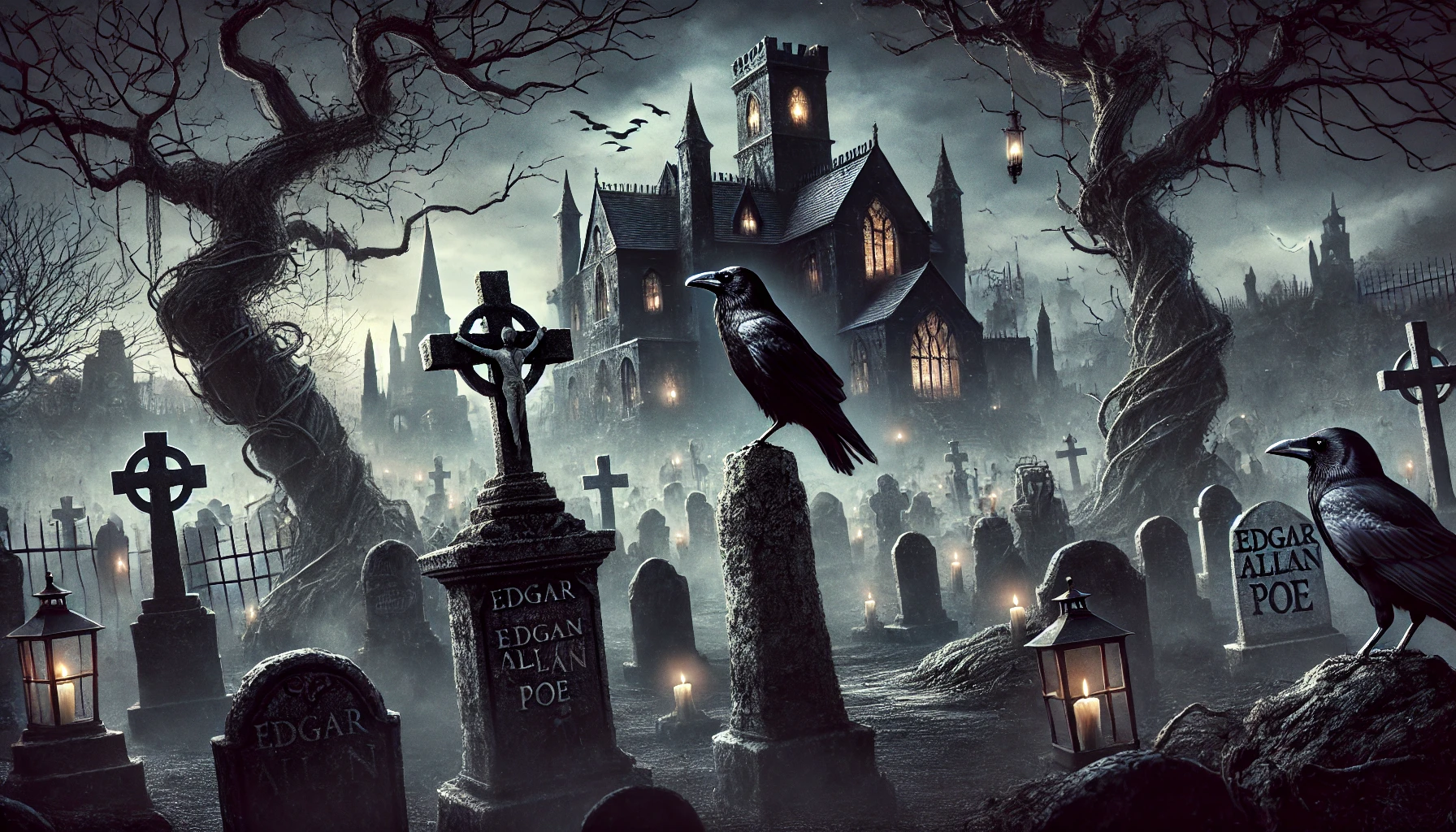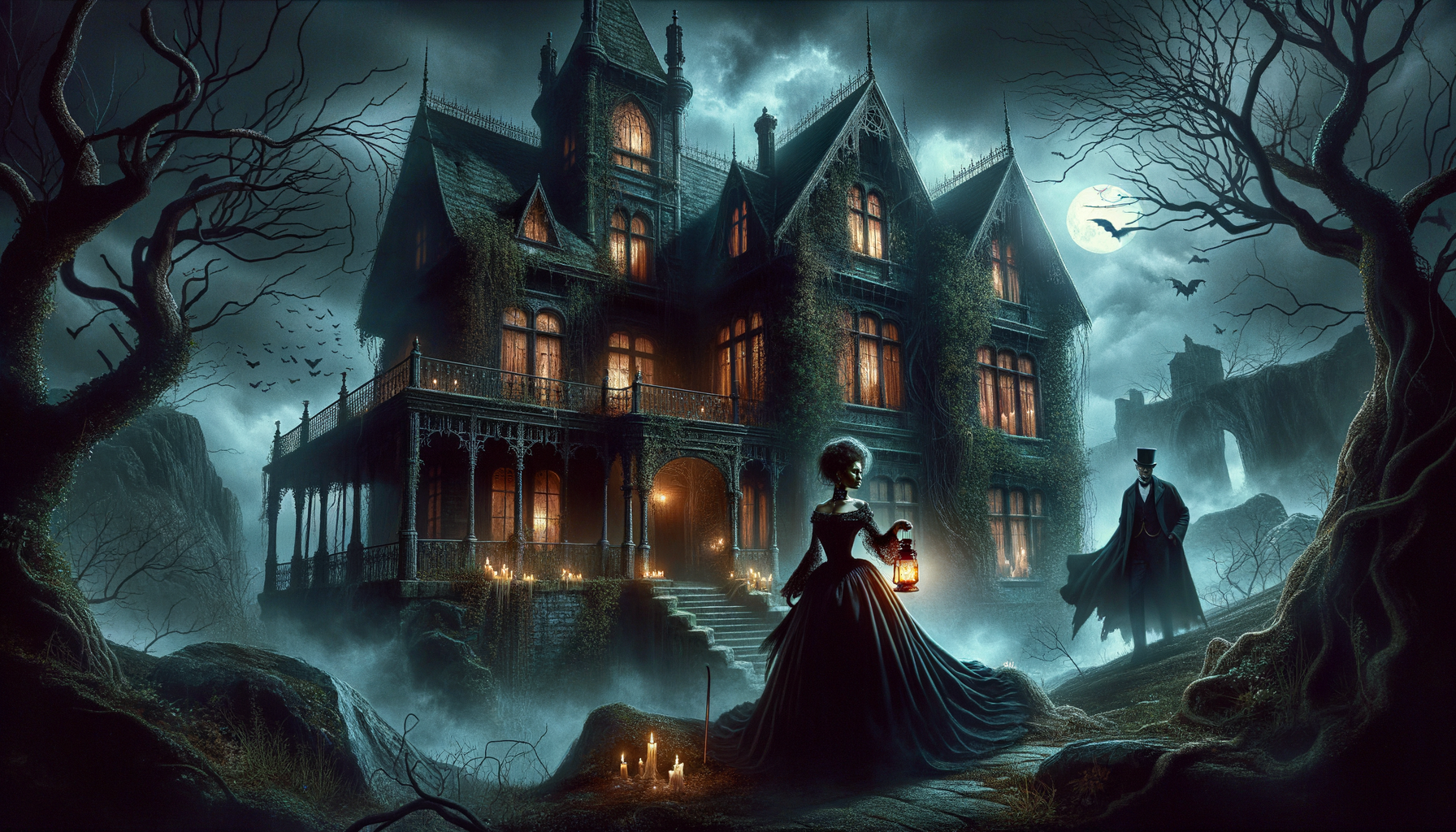Dive into the themes of madness and insanity in Edgar Allan Poe’s short stories. This guide explores key motifs like death, madness, and the supernatural, offering insights and analysis for literature enthusiasts.
Introduction
Edgar Allan Poe’s stories are rife with themes of madness and insanity, reflecting his fascination with the darker aspects of the human mind. His characters often teeter on the edge of sanity, driven to madness by their obsessions, fears, and the inescapable reality of death. This article explores Poe’s depiction of madness, with a closer look at “The Tell-Tale Heart,” the role of unreliable narrators, and how madness enhances the horror in his tales.
Depictions of Madness in Poe’s Characters
Poe’s characters frequently exhibit signs of severe mental instability, often descending into madness as a central element of the story. This madness is not just a backdrop but a driving force that propels the narrative and deepens the psychological horror. In stories like “The Fall of the House of Usher,” “The Black Cat,” and “The Tell-Tale Heart,” Poe’s protagonists are consumed by their inner turmoil, leading to irrational actions and catastrophic consequences.
For example, Roderick Usher in “The Fall of the House of Usher” is depicted as a man whose mind is unraveling, his madness intertwined with the decaying state of his ancestral home. His heightened sensitivity and irrational fears manifest in hallucinations and a profound sense of doom, ultimately leading to his demise. Similarly, in “The Black Cat,” the narrator’s descent into madness is marked by his escalating violence and paranoia, culminating in a gruesome act of murder.
A Closer Look at “The Tell-Tale Heart”
“The Tell-Tale Heart” is one of Poe’s most famous stories, and it provides a clear and disturbing depiction of madness. The narrator, who insists on his sanity, is obsessed with the old man’s “vulture-like” eye. This obsession drives him to commit murder, dismembering the old man’s body and hiding it beneath the floorboards.
Despite his meticulous planning and execution, the narrator’s madness is evident through his erratic behavior and heightened paranoia. He is haunted by the sound of the old man’s heart beating beneath the floorboards, a manifestation of his guilt and descent into insanity. Poe’s use of first-person narrative allows readers to experience the protagonist’s madness from within, making the horror more immediate and personal.
The Role of Unreliable Narrators
Unreliable narrators are a hallmark of Poe’s writing, adding layers of complexity and intrigue to his stories. These narrators, often suffering from various forms of madness, present skewed versions of reality that challenge readers to discern the truth. Their unreliability heightens the sense of unease and uncertainty, making the stories more compelling and terrifying.
In “The Tell-Tale Heart,” the narrator’s insistence on his sanity, despite his clearly irrational and homicidal behavior, exemplifies the unreliable narrator. His skewed perception of reality and obsessive focus on the old man’s eye create a disorienting and unsettling experience for the reader. Similarly, in “The Black Cat,” the narrator’s shifting justifications for his violent actions and his descent into madness leave readers questioning the veracity of his account.
Unreliable narrators serve to blur the line between reality and delusion, enhancing the psychological horror of Poe’s tales. Their distorted perspectives force readers to navigate the murky waters of their madness, creating a sense of disorientation and dread.
How Madness Enhances the Horror in Poe’s Stories
Madness in Poe’s stories is not merely a character trait but a mechanism that amplifies the horror. By delving into the minds of his deranged protagonists, Poe creates a claustrophobic atmosphere where the boundaries of reality and sanity are constantly tested. This psychological depth adds a layer of terror that transcends mere physical horror.
In “The Tell-Tale Heart,” the narrator’s madness transforms a simple murder into a harrowing exploration of guilt and paranoia. The relentless beating of the old man’s heart, heard only by the narrator, symbolizes the inescapable nature of his guilt and the fragility of his sanity. The story’s horror lies not in the act of murder itself but in the narrator’s unraveling mind.
Similarly, in “The Fall of the House of Usher,” Roderick Usher’s madness is mirrored by the decaying mansion, creating a symbiotic relationship between mind and environment. The story’s climax, where the house collapses as Roderick’s mind disintegrates, highlights how Poe uses madness to enhance the horror, making it an intrinsic part of the narrative fabric.
Poe’s exploration of madness also serves to probe deeper existential questions about the nature of reality, identity, and the human psyche. His characters’ struggles with insanity reflect broader themes of isolation, fear, and the unknown, resonating with readers on a profound psychological level.
Conclusion
Madness and insanity are central themes in Edgar Allan Poe’s works, providing a rich tapestry of psychological horror that continues to captivate readers. Through his vivid depictions of deranged characters, the use of unreliable narrators, and the intricate portrayal of mental disintegration, Poe masterfully enhances the terror in his stories. “The Tell-Tale Heart” exemplifies how madness can transform a narrative, offering a disturbing glimpse into the human mind’s darkest corners. By delving into these themes, Poe not only entertains but also invites readers to confront their own fears and the fragile boundaries of sanity.




